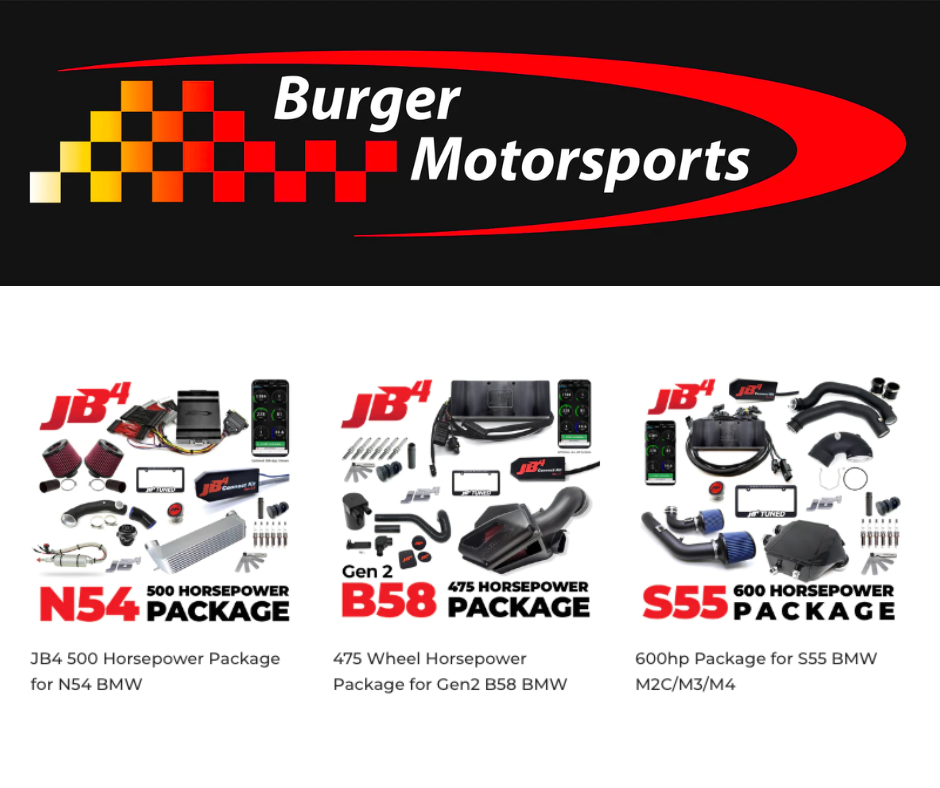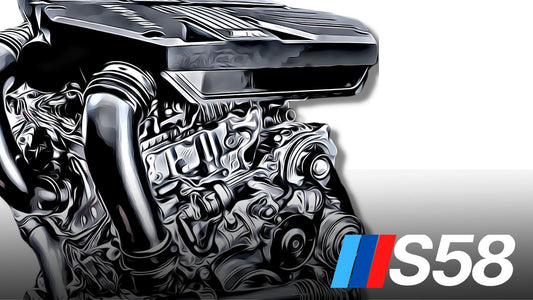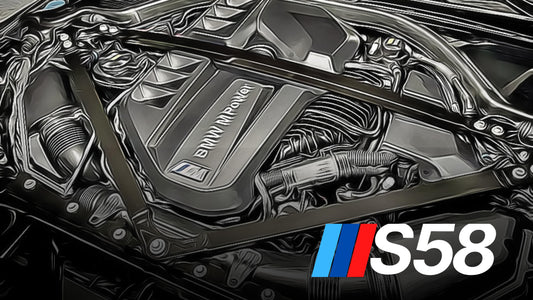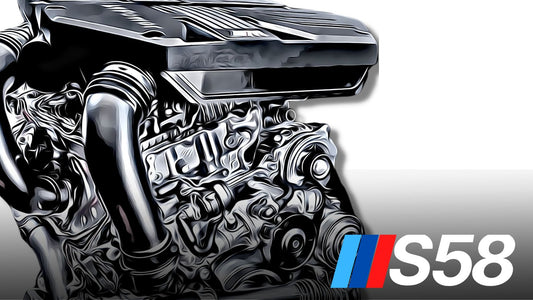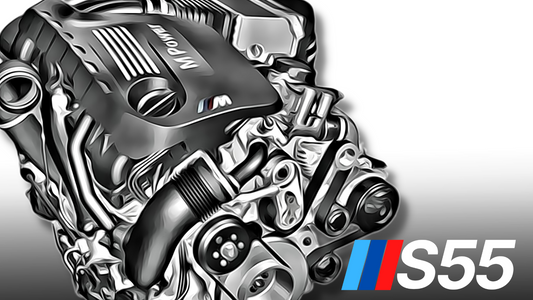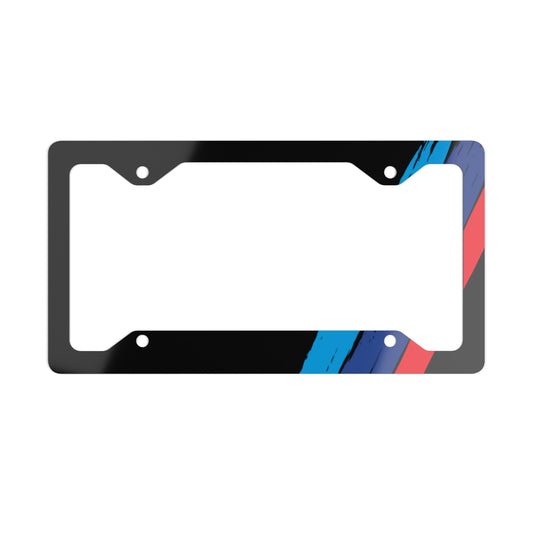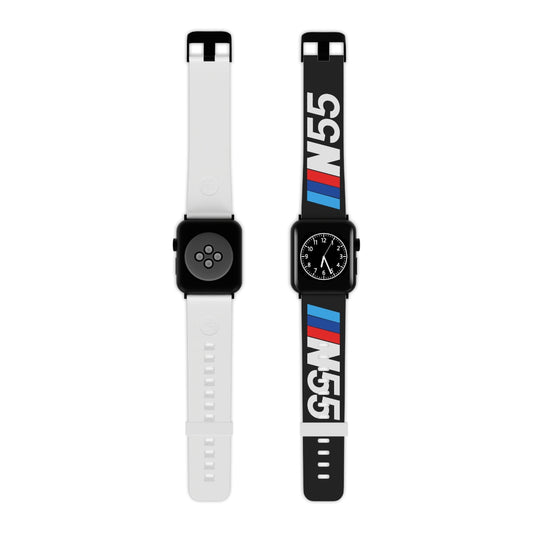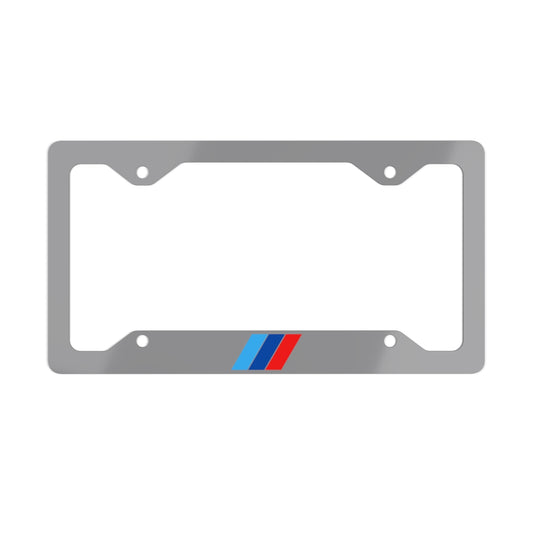General N55 FAQ's
What exactly is the BMW N55?
The BMW N55 is a 3.0L inline 6 turbocharged, direct injected gasoline engine that was manufactured between 2009 and 2019. BMW's N55 engine replaced the N54 engine but used a single turbo instead of the dual turbo N54. The N55 followed in the footsteps of the N54, winning three consecutive Ward's 10 Best Engines accolades. It is most often seen in BMW 335i cars from 2011 to 2015.
What BMW models are powered by the N55
The following models are powered by the BMW N55 Engine:
- 2011-2013 135i
- 2012-2013 135is
- 2012-2016 M135i
- 2013-2016 M235i
- 2016-2018 M2
- 2011-2015 335i
- 2013-2016 435i
- 2010-2017 535i
- 2011-2018 640i
- 2012-2015 740i/Li
- 2012-2015 X1 35i
- 2010-2017 X3 35i
- 2014-2016 X4 35i
- 2014-2018 X5 35i
- 2014-2019 X6 35i
What is the horsepower of the BMW N55?
As with the BMW N54, the first N55 cars had 300 horsepower and torque. BMW's N55 engine, like the N54, was underpowered from the start. Dynos show standard N55s producing up to 280whp and 280-290wtq. This equates to around 330hp and 330-340tq.
N55s from later generations, such as the N55B30T0 used in the BMW M2, produce 365 horsepower. Additional N55 models vary from 300 to 365 horsepower.
Are the N55 Internals Forged or Cast?
The N55 uses cast internals. Although not as strong as forged, the N55's internals are still quite durable.
How Many Miles Will the N55 Last?
The N55 will most likely endure as long as you are willing to keep up with repairs and routine maintenance. Most N55 internal components should go far over 200,000 kilometers. It is usually the components surrounding the engine that get expensive with time.
What is the N55 Compression Ratio?
10.2 to 1. The N54 and N55 both share the 10.2 compression ratio.
Is the N55 Twin Turbo?
No, the N55 is powered by a single turbocharged engine. BMW named it "TwinPower Turbo," which has led to misunderstanding and potentially legal action.
How Many Valves Does the N55 Have?
The N55 has a total of 24 valves. It has a double overhead cam (DOHC) inline-6 engine. As a result, each cylinder has two intake and two exhaust valves. Four valves per cylinder multiplied by six cylinders = 24 valves.
How Fast is the BMW N55?
Most N55s are limited to 155mph out of the factory. The removal of the speed limits enables high speeds closer to 165-175mph, depending on the model. Modded BMW N55s are capable of exceeding 180mph.
BMW N55 Standard Maintenance FAQ's
What are the Common N55 Standard Maintenance Items?
We are only concerned with engine maintenance (ignoring brakes, batteries, etc). The following are the most typical N55 standard maintenance items:
- Fluids (oil & coolant) (oil & coolant)
- Ignition coils and spark plugs
- Intake Valve Cleaning / Walnut Blasting
Furthermore, because we propose upgrading to an aftermarket performance intake, we are neglecting air filters. Aftermarket choices are often cleanable and do not require regular replacement.
How Much Oil Does the N55 Hold? What is the N55 Oil Capacity?
N55 oil capacity is 6.9 quarts (6.5 liters) of oil. This is the exact same as the N54 engine.
What Oil Weights are Approved on the N55?
0W-30, 5W-30, 0W-40, and 5W-40 are all approved oil weights for the N55. Again, this is the same as the N54 engine. The weight you choose does not matter too much. However, we recommend sticking with one weight for the life of the engine. We've always run 5W-30. This oil weight works perfectly well in cold Colorado winters and extremely hot Houston summers.
What is the Best Oil for the N55?
LiquiMoly 5W-30 is our oil of choice. Excellent German oil that we recommend to others. Many great engine oils exist for the N55. We could spend all evening debating the different oils and finding arguments as to why one is better or worse than the other. Ensure you're picking an LL-01 approved oil and you'll be good to go.
How Often to Change N55 Oil? Recommended N55 Oil Change Interval
Oil changes for the N55 should be performed every 5,000-8,000 kilometers. Alternatively, once a year, whichever comes first. Oil replacement intervals are determined by your driving style and habits. If you're a "aggressive" driver who regularly uses the power in the city, you should probably stay to the lower end. Tracked N55s may even consider replacing their oil every 3,000 miles. If you mostly drive on the interstate, you can get away with 8,000 mile oil changes.
If you disregard these advice, your N55 will not spontaneously combust. Oil reforms, on the other hand, will help secure a longer future.
How Much Coolant Does the N55 Hold? What is the N55 Coolant Capacity?
N55 coolant capacity is 10.5 quarts (10 liters) when completely drained. When doing a coolant flush there are roughly 1-1.5 liters that do not drain. It's typically not worth it to worry about that so expect to fill up on 8.5-9 liters.
What is the Best Coolant/Water Mix on the N55?
The N55 is commonly mixed 50/50. Water is actually more effective at chilling, although larger water concentrations reduce the freezing point. Coolant also aids in corrosion prevention. For individuals who live in warmer climes, a 60% water and 40% coolant combination is probably optimal. Some may go as high as 75% water for track duty. However, in colder climes, avoid using too much water.
Is N55 Coolant Really Lifetime?
No, not at all. We disagree with the lifetime coolant classification and recommend cleansing the N55 coolant at least every 80,000-100,000 miles. However, many N55s will have coolant leaks or cooling system difficulties prior. At that point, flush any remaining coolant.
How Often Should N55 Spark Plugs Be Replaced?
The N55 is hungry for spark plugs, especially when modded, and they should be changed fairly often. We recommend the following N55 spark plug change intervals:
Go on the higher or lower end depending upon your driving style. Those who like to frequently call upon the N55's power should sway towards the lower end. Modest, highway driven N55 spark plugs may even last a bit longer than the above intervals. Nonetheless, spark plugs are a standard maintenance item subject to wear and tear. They rarely fail quickly, but rather become less effective with age and mileage.
Don't overlook the spark plugs. They are essential to your N55's performance. Old, worn spark plugs may cause several problems such as misfires, rough idle, and cold start issues.
What N55 Spark Plugs are Best?
OEM N55 spark plugs are a good choice for N55s with less than 400whp. However, for modified N55s with 350+whp, we propose using NGK 97506 1-step cooler spark plugs.
On standard turbo N55s, either option is a viable choice. NGK's 1-step colder spark plugs, on the other hand, are frequently recognized as the finest spark plugs for modified, turbo BMW engines. Many N54, N55, S55, N63, N20, and S63 owners have had wonderful luck with these NGK 97506 plugs.
Why Run Colder Spark Plugs on Modded N55?
Colder spark plugs transport heat away from the spark plug tips more effectively. Modded N55s with greater boost generate more heat at the spark plug tips. This might result in misfires or engine bangs. Spark plugs that are one step cooler save the day. These plugs aid in the passage of heat from the N55 spark plug tips, reducing the possibility of misfires or knocks.
How Often to Change N55 Ignition Coils?
Ignition coils, like spark plugs, are a common wear and tear item. The N55, like plugs, enjoys rapidly burning through ignition coils. We propose the N55 ignition coil intervals listed below:
Again, ignition coil intervals should be determined by modifications and driving behavior. Upgraded turbo N55s may consume coils more quickly, although mildly driven coils may last a little longer. Most people will fall somewhere around the middle.
What is N55 Walnut Blasting?
Direct-injected engines, such as the BMW N55, have carbon buildup on the intake valves. Oil blow-by is naturally created by the N55 and goes through the intake tract. Fuel is sprayed into the intake ports of port injection engines, removing any oil deposits. The N55, on the other hand, sprays gasoline straight into the cylinder.
As a result, there is no fuel to remove the carbon (oil) deposits from the valves. They become clogged with time, reducing airflow into the engine. This is where walnut blasting can help. It's a somewhat labor-intensive process that typically costs $400-600 at an independent shop. Walnut blasting is the process of "blasting" carbon deposits off intake valves with walnut medium shells.
How Often to Walnut Blast N55?
Every 80,000 miles, N55 walnut blasting should be performed. Some people drive 40,000-50,000 miles every year. Furthermore, some vehicles travel over 100,000 miles without ever being walnut blasted.
How Can N55 Carbon Build-Up Be Prevented on Intake Valves?
Adding a second fuel rail with port injection is the only completely effective solution to remove N55 carbon build-up. Carbon buildup occurs in port injection engines as well, but it is negligible. At the very least, modest enough that walnut blasting is unlikely to be worthwhile.
According to some, methanol infusion inhibits carbon deposits on the N55. It may assist to slow down the accumulation of carbon. Methanol injection, on the other hand, is unlikely to totally avoid carbon buildup. Simply said, there isn't enough meth circulating to make a meaningful difference.
Another point of contention for carbon reduction is oil catch cans. As with meth injection, N55 oil catch cans may also be useful. However, it is unlikely to make a big influence.
How Expensive is N55 Standard Maintenance?
To begin with, basic BMW maintenance is typically more expensive than ordinary automobile maintenance. Turbo engines are considerably more difficult to maintain. Quality LL-01 oil is not cheap. The N55 has a penchant for destroying spark plugs and ignition coils. To summarize, standard maintenance is not inexpensive. However, it is usually relatively doable, particularly for the DIY crowd. Standard maintenance expenditures include the following:
- Oil & Filter Changes - ~$60-70
- Spark Plugs - $95-125
- Ignition Coils - $219-249
- Walnut Blasting - $400-600
If you want to have the job done in a shop, factor in some extra charges. Expect additional charges such as brakes, transmission fluid, and so on. This service is often more expensive on N55 35i vehicles, which frequently have bigger, more forceful brakes.
BMW N55 Common Engine Problems FAQ's
Is the N55 reliable?
Overall, don't expect the N55 to be as dependable as, say, a Toyota or Honda. However, it is a significant advance over the BMW N54 engine in terms of dependability. Given the N54's bad reputation, that may not be saying much.
Some dependability is determined by how effectively the N55 has been maintained. Some things are simply luck of the draw. We already discussed the five most prevalent BMW N55 issues. The list below provides some other typical difficulties that do not require as much examination or description.
What are the Most Common BMW N55 Engine Problems?
N55 Oil Leaks:
- Valve Cover and Valve Cover Gasket (VC/VCG)
- Typically around 100,000 miles. May pop up sooner
- Oil Filter Housing and Oil Filter Housing Gasket
- Around 100,000 miles. Not uncommon to leak earlier
- Oil Pan Gasket
- North of 100,000 miles is common. Leaks may develop sooner but this is typically the last gasket to go. Absolutely ensure you replace this gasket if the subframe is dropped for any reason.
N55 Cooling System Problems:
- Water Pump
- Expect the N55 water pump to fail prior to 100,000 miles. It's relatively uncommon for them to go much past that mark. You may even consider doing this as preventative maintenance if you make it to 100k on the original pump.
- Expansion Tank
- The coolant expansion tank is prone to cracking with age. This will usually outlast the water pump but it may be a good opportunity to knock this out at the same time.
- Coolant Hoses
- Like the expansion tank, N55 coolant hoses are prone to cracking and developing leaks over time. Expect a coolant hose to give out at some point, especially north of 100,000 miles
N55 Belt & Tensioner
Though an improvement over the N54 design, this is still a good item to knock out past 100,000 miles. It will likely last a bit longer, but never a bad idea to replace preventatively. Especially pay attention to the N55's belt if your oil filter housing is or was leaking. The leak may drip oil onto the belt, which is not a good thing.
N55 Charge Pipe
All of the stars are there to help you, hopefully. Upgrade the N55 charge pipe immediately. It is an easy DIY and relatively cheap. The crappy plastic OEM N55 charge pipe is prone to cracking, even on stock boost. Save yourself from being stranded on the side of the road and knock out this upgrade.
- E-Chassis N55 Charge Pipe (2007-2013)
- F-Chassis N55 Charge Pipe (2012-2018)
N55 High Pressure Fuel Pump (HPFP)
Probably not really worth mentioning. However, it is notable since early model N55's did have some HPFP issues. Most of the older, faulty pumps were likely replaced by now. However, some old ones may still be around. The newer re-designed fuel pumps are pretty solid, but still suffer occasional failures.
N55 VANOS Solenoids
N55 vanos solenoid issues usually come up around 120,000 miles. Some people try cleaning the solenoids once the begin going bad. However, it's a short term solution if it even helps at all. Don't worry about replacing these as preventative maintenance. They won't leave you stranded but we recommend replacing rather than cleaning when the time comes.
N55 O2 Sensors
We consider this more of a standard wear and tear item. O2 sensors typically require replacement around 120,000 miles. Please note - the O2 sensors rely on each other for calibration. The post-cat sensor still matters even if you're running a catless downpipe.
Vacuum Lines
Vacuum lines cause the dreaded under-boost codes, such as 30FF. Not as common a problem as with the N54. However, something to look into if you're experiencing boost under target issues.
The above is not an exhaustive list of possible issues. Early model N55s are approaching a decade in age. On older, high mileage specimens, almost every fault is fair game. Again, the N55 engine is more dependable than the previous N54 engine. It's also a turbocharged, high-performance engine, so don't anticipate perfect dependability or low-cost maintenance.
How Expensive is the BMW N55?
It's difficult to predict how much a N55 will cost to own. The N55 should be a relatively affordable engine for the do-it-yourself audience. However, it may entail spending some weekends in the garage pounding your skull against a wall. Oil leaks are common, and gaskets are inexpensive to replace. They may, however, be time-consuming and exhausting restorations. Repair fees can easily mount up for people who go to a repair shop for every problem. A simple $30 gasket oil leak might turn into a $1,000 job at an independent repair shop.
Age also has a significant impact on overall dependability and expense. As you've probably observed, there's a lot to do in the 100,000-120,000 mile range. Look for a N55 that has had a significant portion of this maintenance completed. Alternatively, go for a newer, lower-mileage N55.
Why is my N55 Idling Rough?
Rough idle is a widespread issue with many BMW engines, not just the N55. But don't worry. Rough idle can be caused by a variety of issues. However, these are frequently simple and affordable problems. Consider the following if your N55 is idling poorly:
- Spark plugs
- Ignition coils
- VANOS solenoids
- HPFP
- Fuel injectors
These are only a few examples of probable reasons. The top three causes of N55 rough idle are by far the most prevalent. HPFP and/or injector repairs are substantially more expensive, but they are less common.
BMW N55 Tuning & Modding FAQ's
What is the Best N55 Tune?
The N55 aftermarket tuning market is crowded with alternatives. We recommend that you take some time studying and selecting the best solution for your specific objectives, needs, and budget. However, we recommend starting with one of the N55 tracks listed below:
- JB4 E Chassis / JB4 F Chassis
- MHD
- bm3 (bootmod3) *Only available for F chassis
The JB4 is a piggyback tuning option and one of our favorite BMW tunes available. Some people dismiss the piggyback, but we think they're great openers. Piggyback tunes "trick" the ECU (also known as the DME) and act as sophisticated boost controllers. The JB4 determines the boost objective and leaves the required changes to the factory DME tune. As a result, they are constrained by the settings of the default tune. But now comes the exciting part. Back-end flashes are flash songs that can be layered on the JB4.
MHD and bm3 are both fantastic flash tune alternatives. You can't go wrong with either option. However, the bootmod3 option is not available on E chassis N55 variants. Furthermore, the bm3 focuses more on custom customization choices. It's a little costly up front, and personalized tracks cost extra. MHD has a wider range of off-the-shelf (OTS) maps.
JB4 + MHD Back-End Flash is the ultimate recommendation.
Is the JB4 a Good N55 Tune?
We'll elaborate on what was already mentioned. The JB4 is fantastic. Burger Tuning JB4 is packed with fantastic features, regular updates/improvements, and excellent customer support. It also enables for map adjustments on the fly. In seconds, you could shift from a simple everyday driving tuning to kill mode. That is only a tiny chunk of what the JB4 has to offer. It's an excellent beginner tune, but it has limitations as a single tuning choice.
However, for the ultimate N55 tuning solution, combine the JB4 with a back-end flash. The JB4's superior safety measures, fantastic features, and accurate boost control remain. Meanwhile, the back-end flash rewrites the factory DME to provide more tuning options.
How Much Horsepower can a Stock Turbo N55 Produce?
Finally, we'll discuss the distinction between EWG and PWG N55's. N55s from 2014 and above are EWG (electronic waste-gate) and offer a little more tweaking flexibility with standard turbos. The maximum standard turbo N55 horsepower is:
- PWG - 400whp
- EWG - 450whp
It's worth noting that these are optimistic figures for just about maxing out the standard turbo. Horsepower is affected by a variety of external elements such as dyno, temperature, altitude, and so on. The given figures are quite close to the world record on stock turbo N55s. Most people should anticipate to see power ratings that are 20-30whp lower than those mentioned above when using FBO, E85, meth, aggressive tune, and so on. However, some of you may have a power happy N55 in ideal conditions that can compete with the record holders.
What Torque Can a Stock Turbo N55 Produce?
EWG automobiles, as previously said, will have a bit more potential. The maximum torque of the stock turbo N55 is as follows:
- PWG - 500wtq
- EWG - 550wtq
As already said. Optimistic figures that just about max out the basic N55 turbo. Even when driving their N55 stock turbo to the utmost, most people should anticipate a little less.
How much E85 can the N55 Tolerate?
On the standard fueling system, the N55 is compatible with 30-40% E85. E85 demands more fuel flow, so be sure your tune can sustain the combination you want to use. To run greater mixes, you'll need an updated LPFP. Furthermore, an improved HPFP is most likely necessary to run 100% E85.
Is it safe to use E85 in the N55?
Yes. It is completely safe to use as long as your tune supports the E85 blend. One thing to keep in mind is that E85 is more corrosive than gasoline, so don't leave too much E85 in the system for too long.
Otherwise, E85 offers several advantages. It burns more slowly than gasoline. It also necessitates greater fuel injection into the cylinder, which minimizes the likelihood of engine knocking. All of this adds up to increased power. Of course, increased fuel flow necessitates decreased fuel economy.
What are the potential N55 fueling limitations or bottlenecks?
The standard low pressure fuel pump is the most significant N55 fuelling constraint (LPFP). Stock LPFPs are limited to 30-40% E85 mixes. An enhanced LPFP on a standard turbo should bring you close to 60% E85. Higher E85 mixes will most likely have little effect on factory turbo N55s.
If you wish to go even higher, anticipate the stock HPFP to cap before you can run 100% E85. If you want to push the stock HPFP to its limits, keep a watch on AFRs and fuel pump pressure.
To exceed 500-550whp on heavy E85 mixtures, the N55 will require the addition of a second fuel rail with port injection. This may be costly, therefore it's not suggested unless you're running a huge turbo and pushing the platform's capabilities.
What Does FBO N55 Stand For? What does the acronym FBO stand for?
FBO N55 is an abbreviation for full bolt-on N55. FBO is commonly used to describe a tune, performance intake, catless downpipe, and improved intercooler. As part of being FBO, some incorporate a complete exhaust. However, exhaust does not contribute much power in comparison to the cost, therefore we disregard it as a regular N55 FBO item. Some FBO packages include enhanced gasoline pumps and inlets. The typical usage of FBO, on the other hand, refers to the four basic N55 bolt-ons that were first stated.
What is the Max Boost on N55 Stock Turbo?
For stock turbo N55s, 19-21psi is a fair "safe" level. However, some have achieved 25-26psi on standard turbos. Expect EWG N55s to produce a bit more boost and power.
What is the best N55 Catless Downpipe?
The VRSF catless downpipe is usually recommended. They produce high-quality goods at reasonable pricing. It's difficult to go wrong with VRSF.
How Loud is Catless Downpiped N55?
The sound of a catless downpiped N55 is not too loud. Expect a somewhat louder start-up and a deeper, more aggressive sound while accelerating hard. The catless downpipe is virtually undetectable while driving in town or on the highway. In our perspective, this is the best of both worlds. More intense noises when desired, but not too invasive for regular driving.
Some people may find a catless downpipe combined with a performance or catless exhaust overly noisy. If you don't want too much noise, just use the downpipe.
What is the Horsepower Gain of a N55 Catless Downpipe?
The expected horsepower improvements from a N55 catless downpipe are in the 10-20whp range. Exact gains are determined by tuning and other add-ons. A tune and downpipe-only N55 will most likely be at the bottom end of the price range.
How much additional horsepower does a N55 Performance Intake create?
N55 hp gains with performance intake ranging from 5-15whp A performance intake will only improve power if the stock airbox limits or restricts the needed air flow. The factory airbox is likely sufficient to sustain only a tune and may add very little horsepower. N55s pushed to the limit on the standard turbo may see improvements of more than 10whp with a performance intake.
What are the Limits on Stock Internal N55 Engines?
We're all aware of the N54's reputation for handling enormous power and boost on unopened engines. Unfortunately, the N55 will not have the same level of durability. That's not to suggest the N55 isn't capable.
The N55 should be able to handle 500-600whp with ease. Its cast crank and rods limit its performance when compared to the N54's forged components. The N55 internals, on the other hand, remain robust. With careful tune and monitoring, you should be able to push above 600whp without trouble, but that's stretching it.


